Fall Foliage
Facts and FiguresWhy Leaves Change Colors Each fall, leaves turn breathtaking shades of orange, purple, red, yellow and brown in a fantastic show of nature's glory. But why do leaves change color? Although Jack Frost gets most of the credit, the scientific reason for our beautiful fall foliage is a process called photoperiodism. As the sun moves farther south, the hours of daylight shorten and the temperatures fall. This causes leaves to cease production of chlorophyll, the chemical that colors leaves green. As the chlorophyll disappears, the underlying colors of the leaves are unmasked. The next strongest pigment becomes dominant giving the leaves a "new" color.
Fall Foliage Coloration GuideYellows Ash, White - Yellow
Basswood - Yellow
Beech - Yellow
Birch, River - Dull Yellow
Birch, Sweet - Yellow
Buckeye, Ohio - Yellow
Coffeetree, Kentucky - Yellow
Cottonwood, Eastern - Yellow
Elder, Box - Yellow
Elm, American - Yellow
Hazel Nut - Brownish Yellow
Hickory, Mockernut - Dull Yellow
Hickory, Pignut - Dull Yellow
Hickory, Shagbark - Dull Yellow
Hickory, Shellbark - Dull Yellow
Hophornbeam, Eastern - Yellow
Locust, Black - Yellow
Locust, Honey - Yellow
Maple, Silver - Pale Yellow
Oak, Chestnut - Yellow
Pecan - Dull Yellow
Redbud, Eastern - Yellow
Shad Bush - Bright Clear Yellow
Tuliptree - Yellow
Walnut, Black - Yellow
Walnut, White - Bright Yellow
Willow, Black - Pale Yellow Reds Dogwood - Crimson
Gum, Black - Deep Red
Oak, Northern Red - Rusty Red
Oak, Pin - Crimson
Oak, Scarlet - Scarlet
Oak, Southern Red - Rusty Red
Oak, Swamp Chestnut - Dark Crimson
Sourwood - Deep Red
Sumac - Brilliant Red
Browns Oak, Bur - Pale Brown
Oak, Post - Pale Brown
Oak, Shingle - Brown
Oak, Swamp White - Pale Brown Multi-Colors Hawthorn - Brilliant Varying Colors
Hazel Nut - Brownish Yellow
Hornbeam - Orange, Scarlet
Maple, Red - Red, Orange
Maple, Sugar - Yellow, Orange, Red
Oak, Black - Dull Red to Orange Brown
Oak, Blackjack - Dull Yellow or Brown
Oak, White - Pink or Red
Persimmon - Glossy Green with Yellow
Sassafras - Red, Orange, Yellow
Sweetgum - Yellow, Orange, Brown
Sycamore, American - Yellow, Brown
Witch Hazel - Bright Yellow-Orange No Change Magnolia, Umbrella - No Change
Holly, American - No Change If you want to travel outside of Ohio to see the changing leaves, you don't have to go very far. Did you know that nearly 80 percent of West Virginia is covered in forests? West Virginia is the third-most-forested state, next to Main and New Hampshire. West Virginia's varied elevation and topography mean peak fall color lasts from September through October. The higher elevations turn color first. West Virginia also has several close-to-home Fall festivals. Check their website for more details. Enjoy these spectacular photos from West Virginia 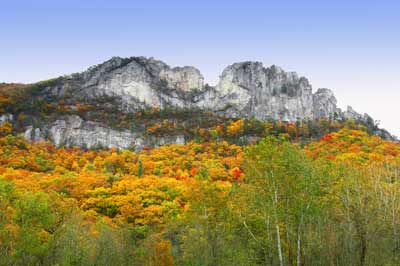
Seneca Rocks in Autumn
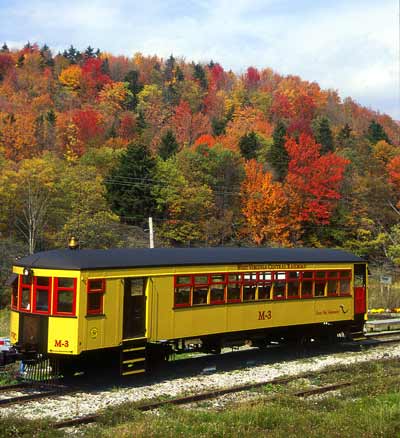
The Cheat Mountain Salamander
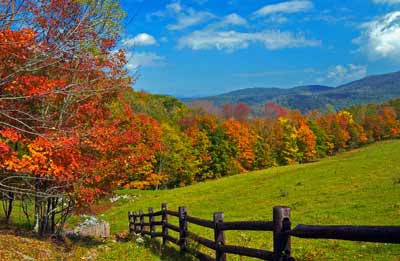
Leaves changing colors along the Highland Highway
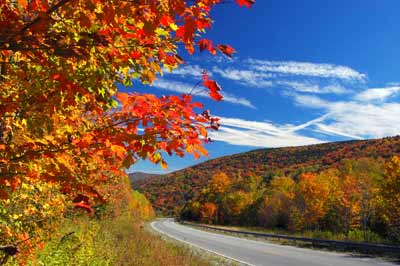
More colors along the Highland Highway
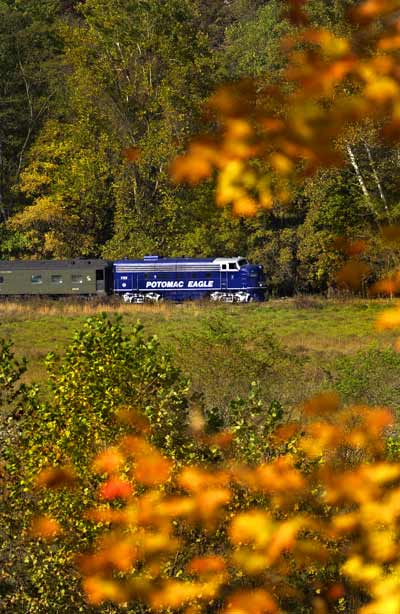
The Potomac Eagle stationed in Hampshire County
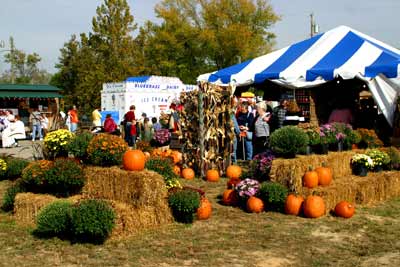
West Virginia Pumpkin Festival in Milton
Top of Page
Back to Travel
Back to Trees
|







